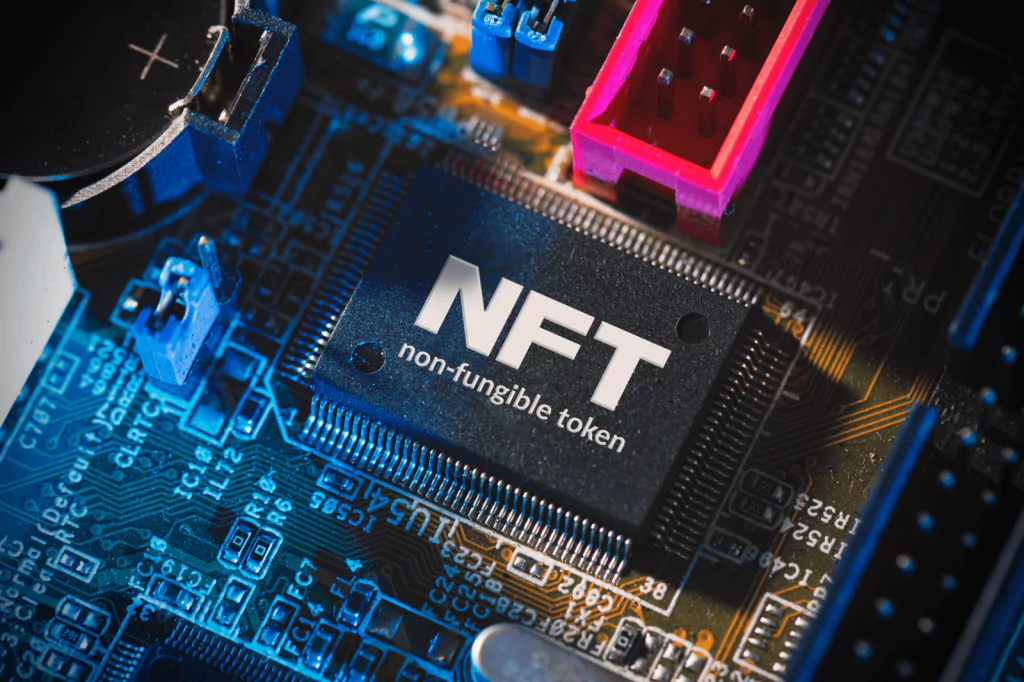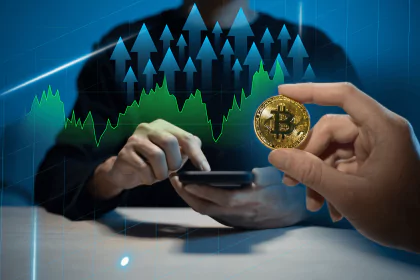In the digital age, where technology constantly evolves and reshapes industries, Non-Fungible Tokens (NFTs) have emerged as a groundbreaking innovation. NFTs, unique digital assets verified using blockchain technology, have not only revolutionized the concept of digital ownership but have also had a profound impact on various sectors, particularly the art and gaming industries. This article delves into the rise of NFTs, exploring their origins, the technology behind them, and their transformative effects on artists, gamers, and the broader digital economy.
What are NFTs?
Definition and Basic Concept
Non-Fungible Tokens (NFTs) are digital assets that represent ownership of a unique item or piece of content. Unlike cryptocurrencies such as Bitcoin or Ethereum, which are fungible and can be exchanged on a one-to-one basis, NFTs are unique and cannot be exchanged on an equivalent basis. Each NFT contains distinguishing information that makes it distinct from any other NFT, making it a one-of-a-kind asset.

Blockchain Technology
The foundation of NFTs lies in blockchain technology, a decentralized and secure digital ledger that records transactions across multiple computers. The blockchain ensures the authenticity and ownership of NFTs by providing a transparent and tamper-proof record of all transactions. Ethereum is the most widely used blockchain for NFTs, thanks to its smart contract functionality, which allows developers to create decentralized applications (dApps) and digital assets.
History and Evolution
The concept of NFTs gained traction in 2017 with projects like CryptoKitties, a blockchain-based game that allowed players to collect, breed, and trade virtual cats. CryptoKitties demonstrated the potential of NFTs to create and manage digital collectibles, paving the way for broader acceptance and innovation within the NFT space. Since then, NFTs have evolved to encompass a wide range of digital assets, including art, music, videos, virtual real estate, and more.
The NFT Boom: Key Milestones and High-Profile Sales
CryptoPunks and Early Successes
One of the earliest and most iconic NFT projects is CryptoPunks, a series of 10,000 unique 24×24 pixel art images created by Larva Labs. Initially given away for free, CryptoPunks quickly gained popularity and became highly sought after, with some selling for millions of dollars. This early success highlighted the financial potential of NFTs and sparked interest from artists, collectors, and investors.
Beeple’s $69 Million Sale
The NFT market reached a significant milestone in March 2021 when digital artist Beeple sold his artwork “Everydays: The First 5000 Days” for $69 million at Christie’s auction house. This sale not only brought mainstream attention to NFTs but also legitimized digital art as a valuable and collectible asset. Beeple’s success inspired countless other artists to explore the NFT space and capitalize on this new medium.
The Rise of NFT Marketplaces
The growth of NFTs has been facilitated by the emergence of various online marketplaces where users can create, buy, sell, and trade NFTs. Platforms like OpenSea, Rarible, SuperRare, and Foundation have become central hubs for NFT activity, providing artists and collectors with the tools and infrastructure needed to engage in the NFT ecosystem. These marketplaces have played a crucial role in driving the adoption and popularity of NFTs.
The Impact of NFTs on the Art Industry
New Revenue Streams for Artists
NFTs have provided artists with new revenue streams by enabling them to sell digital art directly to collectors. Traditionally, artists have relied on galleries and intermediaries to sell their work, often resulting in a significant portion of the profits being taken by middlemen. With NFTs, artists can retain a larger share of their earnings and have greater control over their pricing and distribution.
Democratization of Art
NFTs have democratized the art world by giving artists from diverse backgrounds and geographies a platform to showcase and sell their work. This inclusivity has led to a richer and more varied artistic landscape, where talent and creativity are the primary currencies. Emerging artists who may have struggled to gain recognition in traditional art markets now have the opportunity to reach a global audience and build their careers.
Royalties and Secondary Sales
One of the unique features of NFTs is the ability to embed royalties into smart contracts. This means that artists can earn a percentage of sales every time their NFT is resold on the secondary market. This is a significant departure from traditional art markets, where artists typically do not benefit from the increased value of their work after the initial sale. Royalties provide a sustainable income stream for artists and incentivize them to continue creating high-quality content.
Digital Preservation and Provenance
NFTs also offer benefits in terms of digital preservation and provenance. The blockchain provides a permanent and tamper-proof record of ownership and transaction history, ensuring that the provenance of an artwork is transparent and verifiable. This can help combat issues such as art forgery and theft, providing collectors with greater confidence in the authenticity and value of their purchases.
Challenges and Controversies
Despite the numerous advantages, the rise of NFTs has also brought challenges and controversies. One of the primary concerns is the environmental impact of blockchain technology, particularly the energy-intensive process of mining and verifying transactions. This has led to criticism and calls for more sustainable solutions within the NFT space.
Additionally, the speculative nature of the NFT market has raised concerns about bubbles and market volatility. While some NFTs have sold for astronomical prices, others have seen their values plummet, leading to significant financial losses for investors. Intellectual property issues have also emerged, with instances of artists’ works being tokenized and sold without their permission, highlighting the need for better regulation and protection within the industry.
The Impact of NFTs on the Gaming Industry
Ownership and Interoperability
In the gaming industry, NFTs have introduced the concept of true ownership of in-game assets. Traditionally, players could purchase virtual items within games, but these items were typically confined to the game’s ecosystem and could not be traded or sold outside of it. NFTs have changed this dynamic by allowing players to buy, sell, and trade in-game assets across different games and platforms, provided they are built on compatible blockchain networks.
This interoperability enhances the gaming experience by giving players more freedom and control over their virtual possessions. It also opens up new opportunities for developers to create cross-platform experiences and collaborate on shared virtual worlds.
Play-to-Earn Models
NFTs have enabled the rise of play-to-earn (P2E) models, where players can earn real-world value through gameplay. Games like Axie Infinity have demonstrated the viability of this model, allowing players to earn income by breeding, battling, and trading virtual creatures. This has created significant economic opportunities, particularly in regions with lower average incomes, where playing NFT-based games can provide a substantial source of income.
Economic Ecosystems
The integration of NFTs in gaming has led to the development of complex economic ecosystems within games. Players can invest in virtual land, participate in governance, and engage in commerce, creating vibrant, self-sustaining economies. These virtual economies often mirror real-world financial systems, with players buying, selling, and trading assets in a marketplace driven by supply and demand.
Challenges and Future Prospects
The integration of NFTs in gaming is not without its challenges. Issues such as market volatility, regulatory uncertainty, and the need for user education are significant hurdles. Additionally, the environmental concerns associated with blockchain technology are particularly relevant in the gaming industry, where the high volume of transactions can have a substantial impact.
Despite these challenges, the potential for innovation and growth in this space remains substantial. As blockchain technology continues to evolve and become more efficient, the integration of NFTs in gaming is likely to become more widespread, offering new and exciting opportunities for both developers and players.
Real-World Examples and Case Studies
Beeple’s $69 Million NFT Sale
One of the most notable events in the NFT art world was the sale of Beeple’s digital artwork, “Everydays: The First 5000 Days,” for $69 million at Christie’s auction house. This event not only highlighted the financial potential of NFTs but also legitimized digital art as a valuable and collectible asset. Beeple’s success inspired countless other artists to explore the NFT space and capitalize on this new medium.
CryptoPunks and the Birth of Digital Collectibles
CryptoPunks, a series of 10,000 unique 24×24 pixel art images created by Larva Labs, were among the first NFTs to gain significant popularity. Originally given away for free, CryptoPunks have since become highly sought after, with some selling for millions of dollars. The success of CryptoPunks demonstrated the appeal of digital collectibles and helped to establish the NFT market as a viable and lucrative space for both creators and collectors.
Axie Infinity and the Play-to-Earn Revolution
Axie Infinity, a blockchain-based game developed by Sky Mavis, has become a flagship example of the play-to-earn model. Players earn tokens by playing the game, which can then be traded for real-world currency. This model has provided significant income opportunities, particularly in regions with lower average incomes. Axie Infinity’s success has inspired the development of numerous other play-to-earn games, further solidifying the role of NFTs in the gaming industry.
The Future of NFTs: Trends and Predictions
Integration with Traditional Industries
NFTs are expected to integrate more deeply with traditional industries such as real estate, fashion, and music. For example, digital twins of physical assets can be created as NFTs, allowing for new forms of ownership and investment. In the fashion industry, brands are exploring ways to use NFTs for digital fashion items, virtual runway shows, and exclusive digital collectibles.
Enhanced Interoperability
As blockchain technology evolves, enhanced interoperability between different blockchain networks is anticipated. This development will facilitate the seamless transfer of NFTs across various platforms and ecosystems, further expanding their utility and adoption. Cross-chain solutions and protocols are being developed to address the challenges of interoperability, making it easier for users to move their assets between different blockchains.
Regulatory Developments
Regulation will play a critical role in the future of NFTs. Governments and regulatory bodies are increasingly paying attention to the NFT market, and future regulations will likely address issues such as consumer protection, intellectual property rights, and financial compliance. Clear and fair regulations can help to create a more stable and secure market for NFTs, encouraging responsible innovation and protecting the interests of creators and consumers.
Sustainability Initiatives
Given the environmental concerns associated with blockchain technology, sustainability initiatives are expected to gain prominence. Projects focusing on eco-friendly blockchain solutions and carbon offsetting will become increasingly important in addressing the environmental impact of NFTs. Innovations such as proof-of-stake (PoS) consensus mechanisms and layer 2 scaling solutions can help to reduce the energy consumption of blockchain networks, making NFTs more sustainable in the long term.
Conclusion
The rise of NFTs has fundamentally altered the landscape of the art and gaming industries. By providing new revenue streams, democratizing access, and enabling true ownership of digital assets, NFTs have opened up unprecedented opportunities for creators and consumers alike. However, the challenges and controversies associated with this technology must be addressed to ensure sustainable growth and widespread adoption.
The future of NFTs holds exciting possibilities, with continued integration into traditional industries, enhanced interoperability, regulatory developments, and sustainability initiatives all playing crucial roles. As the NFT ecosystem evolves, it will be essential for stakeholders to work together to navigate the complexities and unlock the full potential of this transformative technology.












